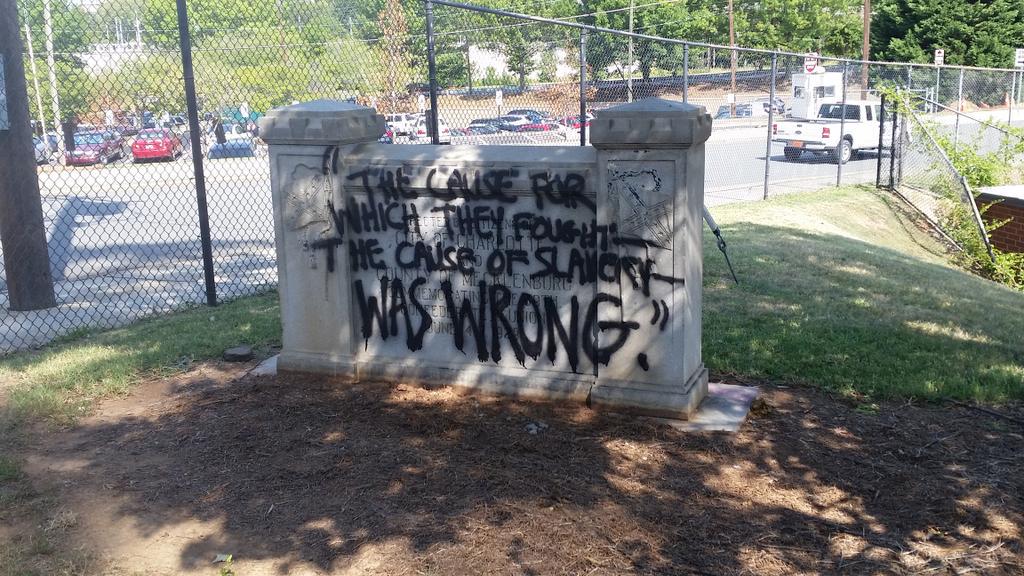Yesterday’s session on the role of public historians in the ongoing debate surrounding Confederate iconography at #aaslh2015 went extremely well. We had a full house and the comments were incredibly thoughtful. I love that the participants didn’t wait for the allotted time at the end of the session. They jumped right in, which suggests that public historians have a great deal on their minds and want to be engaged.
The question of how to proceed, however, is less than certain. I sensed a fairly sharp split among the audience and even the panelists. On the one hand there is the push for context and interpretation along the narrow lines of some form of wayside exhibit. This can take many forms, but the basic assumption at work here is that historical context has the potential to defuse the strong emotions on both sides by neutralizing the site. In providing historical context we acknowledge that what may have at one point represented a community no longer does so without removing it and offending those who still find meaning in its presence.
Others expressed skepticism about such an approach. While the interpreter and historian in me appreciates the importance of providing context, I am also very skeptical that this approach alone will bear fruit in the current climate. The debate about the presence of Confederate iconography in public spaces sits at a crossroads for public historians. We can go down the safe road of context, but as I have suggested in previous posts, this is not likely to assuage the concerns of those individuals and groups that are deeply invested in the outcome of these discussions.
This debate is not primarily about history. It is about ideas of justice, race, politics and community identity. If public historians want to get engaged they are going to have to meet their communities within the context of this agenda. In other words, emphasizing the public in public historian may involve stepping into a role that is unfamiliar.
We didn’t get very far in terms of sketching out what that role might look like. I suspect that for those who take the plunge it will be shaped by local considerations. All in all, I left feeling confident about the future.
I also left having talked with a publisher about editing a volume of essays geared specifically to public historians around how historical institutions can engage the public about these difficult issues. More on that later.

Thank you, Kevin.
I really wish I could have been there – it sounds like a fascinating discussion.
I do agree that any solution will have to be local. National consensus is unlikely in these highly charge times and the nest work of public historians is done locally. I hope many ideas were exchanged at the meeting.
I am sorry you couldn’t make it. The panel went very well. Participants asked some excellent questions and challenged us on a number of fronts. Bob Beatty may organize an online chat at some point soon for those interested. I will keep you updated if I hear more.
For a discussion about New Orleans, go to knowlouisiana.org, then Monumental Decisions: Confederate Memorials in the 21st century.
This is great. Thanks, Mike.
It was great to have you there Kevin. There are certainly no easy answers to the questions that were posed. But we are dedicated to providing a place for folks to grapple with the questions.
Appreciate the thoughtful way you approach our discipline. It was a pleasure to serve on the panel with you.
Hi Bob,
Thanks for organizing the panel and for the invitation. I had a great time at my first AASLH. Met some wonderful people and made a bunch of connections. Looking forward to getting started on the book project so let’s stay in touch.